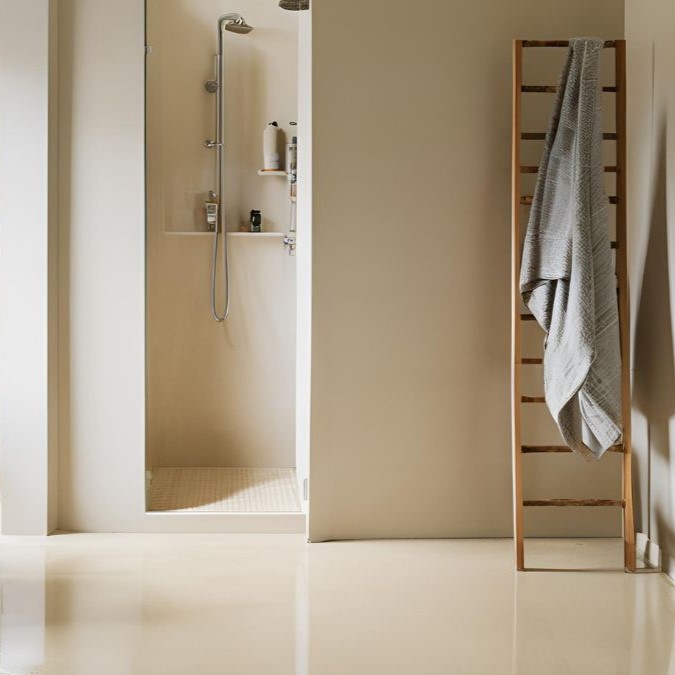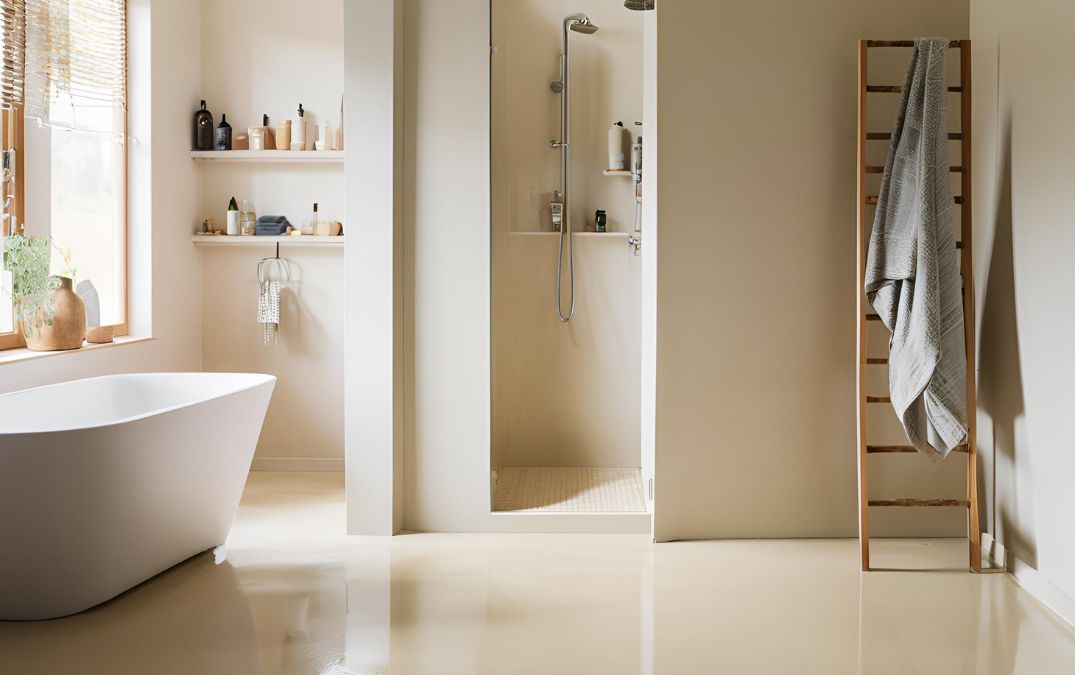Start by marking the location where your shower drain will go. This usually means the center of your shower space, but double check your shower pan specifications to be sure. Use a marker to outline the area on the concrete floor.
Next, it’s time to break through the concrete. You’ll need a hammer drill with a masonry bit to create a pilot hole. Then, switch to a chisel and hammer or a jackhammer to break up the concrete around the marked area. Be careful as you work to avoid damaging any existing plumbing or the structural integrity of the floor.
Once you’ve cleared away the concrete, you’ll need to dig out the dirt to create space for the drain assembly and pipe. Make sure you dig deep enough to accommodate the trap and any necessary piping that will connect to your home’s drainage system. You must check the slope of the drainage pipes to ensure proper water flow; they should have a slight downward angle to prevent any water from backing up.
Now, place the drain assembly into the hole. Fit the trap and pipes together, ensuring they are secure and leak proof. Use PVC primer and cement to bond the joints if you’re working with PVC pipes. Make sure the top of the drain assembly is level with the surrounding concrete surface or slightly below, to accommodate the thickness of the shower pan and tiles.
With the drain assembly in place, you need to backfill the hole. Use gravel or a concrete mix to fill the space around the pipes, providing stability and support. If you’re using concrete, mix it according to the manufacturer’s instructions and pour it carefully around the drain assembly, making sure not to dislodge the pipes. Smooth the surface and let it cure as per the recommended time.
Next, install the shower pan. Apply a layer of thin set mortar to the concrete floor where the pan will sit. Set the shower pan in place, pressing it firmly into the mortar to ensure a good bond. Check that the pan is level in all directions. Attach the pan to the drain assembly according to the manufacturer’s instructions. This often involves tightening a compression fitting to seal the pan to the drain.
After securing the shower pan, it’s time to waterproof. Apply a waterproofing membrane to the shower pan and the surrounding area. This step is a must to prevent water from seeping into the concrete and causing damage. Follow the membrane manufacturer’s instructions for proper application.
Finally, test your installation. Run water through the drain to check for leaks and ensure proper drainage. Address any leaks or drainage issues before moving on to tiling or finishing your shower space.

